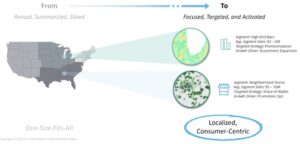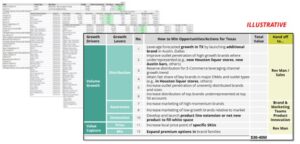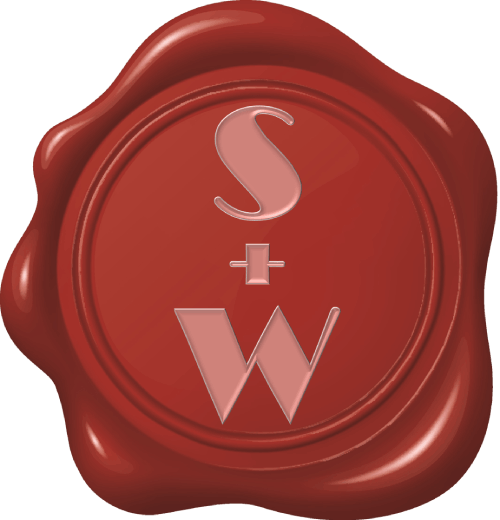My thoughts on how wine producers, distributors and retailers can leverage Artificial Intelligence (AI) to help deliver profitable growth by moving from mass to micro.
This blog combines my two passions: Strategy + Wine. I muse over strategic topics in the wine industry and how to create winning strategies.
It’s no secret the USD 30 billion global wine industry is in challenging times. The challenges range from climate change, overproduction, declining consumption, labor scarcity, social moderation, technological advances, and anti-alcohol legislation. According to the International Organisation of Vine and Wines[1] (OIV), global wine consumption was down 2.6% in 2023, culminating in the lowest consumption volume since 1996. In the U.S., consumption was down 3% in 2023, mirroring trends in Italy and France. While overall U.S. wine consumption is down, there are pockets of customer and market growth, and wine companies should tap into these to help deliver profitable growth.
Today’s diverse consumers are increasingly driving wine companies to transition from a supply-focus to a demand-driven model. This pivot marks an important transition from a mass-market approach to strategies that can prioritize relevance for specific consumer groups, in specific markets. The shift to micro involves wine companies moving from large-scale decision-making and annual planning to embedding granular customer and market insights, and adaptive decision-making into every facet of the value chain. However, it can be daunting to analyze data at the zip-code market level from different sources such as syndicated market data, e-commerce data, firmographic data, transactional and trade spend data, and credit card and receipt data. This is where AI comes into the picture.

I thought it would be helpful to illustrate how AI can be leveraged to drive growth, with an actual example from a leading wine and spirits company in the U.S. The company wanted to better understand how its high-level growth objectives could be distilled into concrete market-level targets, then turn those insights into specific action. In some cases, this meant changing the wholesaler in a specific region, doing more local marketing activation to increase brand awareness, changing local pricing, and optimizing the product portfolio, tailored to each market.
By combining internal data such as category size, category, and varietal growth, with external data such as localized market share, and market potential and growth, the client leveraged AI to create a data-rich picture of micro-markets at the zip-code level that did not exist previously, purpose-built to indicate potential sources of local growth. A Generative AI (GenAI) model was created that enabled the Sales & Marketing teams to ask specific questions such as “what are the best growth opportunities for Brand X in the Houston area within the independent channel?”
To move from automated insights to actions, a set of priority commercial growth levers were used such as distribution, awareness, innovation, price and mix to address the growth potential by micro-market. While each growth lever was typically applicable to many micro-markets, the proportional revenue growth they each drove varied based on market-specific dynamics. The AI model was trained on historical data to identify what growth drivers were most effective for different types of micro-markets. The micro-markets were prioritized based on the potential size of prize, including factors such as market size, market growth, expected market share, company growth and company market share. Clearly defined plans were then generated appropriate for each prioritized micro-market’s competitive landscape, historical trends, and regulatory environment. One of the opportunity markets was Texas, where specific distribution, awareness, innovation, pricing, and mix recommendations were made, such as gain distribution in specific liquor stores, increase local price of specific SKUs, emphasize particular sub-categories, and expand premium options for certain brands.

By leading with strategic priorities and following an iterative design approach, the company focused sales and marketing efforts on the biggest opportunities, balanced competing market signals, and created flexibility for more enhanced data over time to train the AI model.
In total, the wine and spirits company identified significant new organic growth opportunities, and effectively prioritized and delivered consistent growth actions with clear responsibility for execution for specific markets. Traditionally, it would have been difficult to deliver a program at this scale with detailed micro-market data, but with AI, it is now possible to analyze large amounts of data and identify patterns and historical growth levers at a micro-level. It can enable wine companies to move from mass to micro in the future.
About me
Musings of a Strategist about Wine
I am a Corporate Strategist and Wine Enthusiast. I have been for almost 30 years. Today, I am a Principal at Deloitte Consulting LLP focusing on the Food & Beverage industry, and advising boards and executives on growth, and digital business transformation. I hold a Doctor of Business Administration (DBA) in Business Model Innovation. I am part of the Master of Wine program, and I am a DipWSET, Certified Sommelier, and a UC Davis wine program graduate.
This publication contains general information only and Deloitte is not, by means of this publication, rendering accounting, business, financial, investment, legal, tax, or other professional advice or services. This publication is not a substitute for such professional advice or services, nor should it be used as a basis for any decision or action that may affect your business. Before making any decision or taking any action that may affect your business, you should consult a qualified professional advisor.
Deloitte shall not be responsible for any loss sustained by any person who relies on this publication.
[1] International Organisation of Vine and Wines; State of the World Vine and Wine Sector in 2023.
